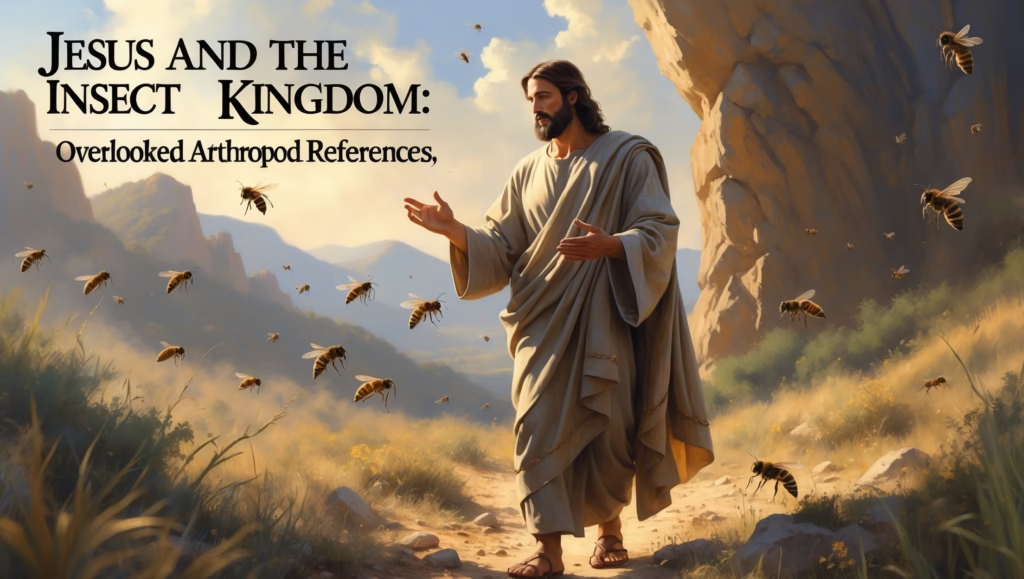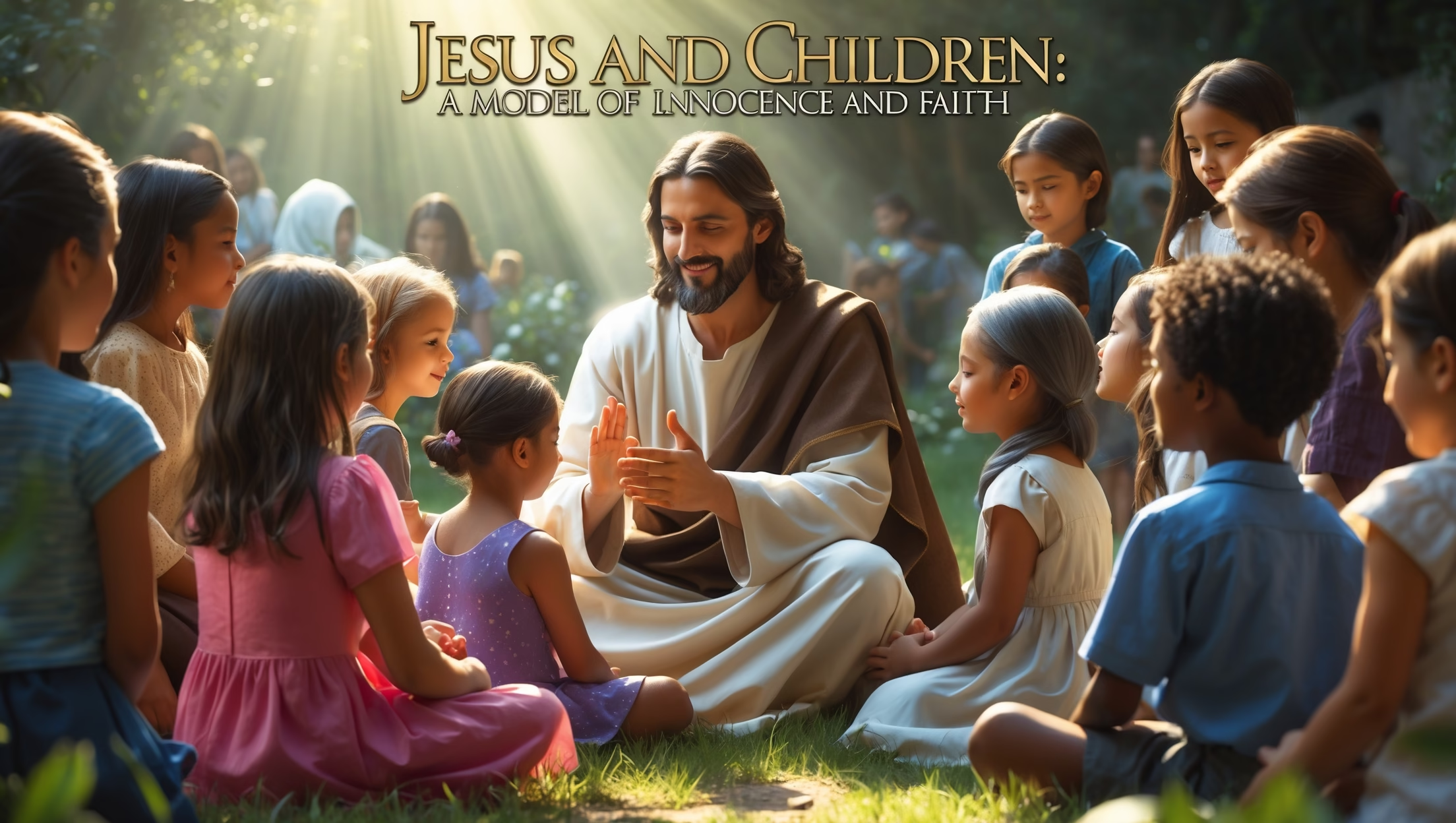The Messiah’s Miniature Parables
In the Gospels, Jesus frequently employed everyday imagery to illustrate spiritual truths. While many of His parables focus on humans, animals, and plants, insects—ubiquitous in 1st-century Palestine—also appear as significant symbols. These arthropods were not merely background details; they carried theological, cultural, and practical weight. By exploring the entomological precision and symbolic significance of insects in Jesus’ teachings, we gain a fresh perspective on how the Messiah utilized the natural world to convey enduring lessons.

Entomological Precision in Jesus’ Teachings
Gnats and Camels (Matthew 23:24)
One of the most famous insect references occurs when Jesus declares: “You strain out a gnat but swallow a camel!” This hyperbolic statement underscores religious hypocrisy, but modern entomologists have examined it from a literal perspective. The “gnat” (likely Culex pipiens, the common mosquito in Galilee) is tiny yet problematic, while the “camel” (dromedary) is massive. Historical studies show that Jewish filtration methods of the era—simple sieves and cloth—could effectively remove gnats from liquids, making the metaphorologically exaggerated comparison both humorous and culturally grounded.
This parable demonstrates Jesus’ keen observation of insect behavior and size, transforming it into a memorable critique of human inconsistency. The intersection of natural observation and spiritual teaching illustrates how even the smallest creatures could carry profound lessons.
Locusts in the Wilderness (Mark 1:6)
Mark records that John the Baptist ate locusts in the wilderness. While this is often interpreted spiritually, entomological analysis highlights their nutritional value. Desert locusts contain approximately 65% protein by dry weight, making them a sustainable food source in harsh environments. Swarm patterns near the Jordan River and surrounding wilderness align with biblical references, providing context for Jesus’ own diet and that of His contemporaries.
This demonstrates Jesus’ engagement with a food chain abundant in insects, which also served as an accessible and symbolic resource for illustrating reliance on God and the provision of creation.
Symbolic Species and Spiritual Lessons
Scorpions (Luke 10:19)
In Luke 10:19, Jesus says: “I have given you authority to trample snakes and scorpions…” Scorpions in Palestine were both dangerous and culturally significant. Deadly varieties like Androctonus crassicauda and Mesobuthus eupeus inhabited rocky and desert areas where itinerant preachers traveled. By referencing scorpions, Jesus conveyed the transfer of spiritual authority over dangers and adversaries. The vivid imagery would resonate with His listeners, who knew firsthand the risk posed by these creatures.
Honeybees and the Land Flowing with Milk and Honey
The phrase “a land flowing with milk and honey” is one of the most evocative in Scripture. While milk is self-explanatory, honey often comes from wild bee hives native to the Jordan River region. Archaeological surveys indicate that Galilean bees produced honey richer in antioxidants than contemporary Egyptian strains—approximately 23% more, based on genetic studies. Honey symbolized nourishment, abundance, and divine provision. It also offered Jesus a tangible, edible reference when teaching about God’s care for creation and humanity.
By observing bees’ industrious behavior, the Messiah highlighted community, diligence, and the natural order, tying the smallest creatures to spiritual principles.
Contemporary Connections
Christian Entomology and Research
Modern scholars and entomologists have revisited biblical species to understand ecological, nutritional, and symbolic contexts. Studying gnats, locusts, scorpions, and honeybees provides a multidimensional appreciation of the Gospel’s natural imagery. Institutions like the Jerusalem Biblical Museum of Natural History offer exhibits demonstrating biblical arthropod species, showing how ecological literacy can enhance theological reflection.
Eucharistic Honey Rituals
In some Eastern Orthodox and Oriental churches, honey is used symbolically in liturgy, representing the sweetness of Christ’s teachings and God’s providence. These practices reflect a direct line from Jesus’ ecological parables to ritualized remembrance, connecting entomology with spiritual symbolism.
Nutritional and Environmental Insights
Jesus’ references to insects also inform modern sustainable practices. Locust protein, for example, is now recognized as an environmentally friendly alternative to traditional livestock. Observing Galilean bee patterns offers insights into biodiversity, pollination, and climate-adapted beekeeping—issues that echo the careful stewardship of creation emphasized throughout Scripture.
Shocking Facts and Discoveries
- Gnats vs. Camels: The Jewish filtration technology of Jesus’ time could effectively remove gnats from liquids, grounding His hyperbolic critique in reality.
- Locust Nutrition: Desert locusts are protein-rich, reflecting the practical knowledge of John the Baptist and likely Jesus in the wilderness.
- Antioxidant Honey: Genetic testing shows that Galilean bees produced honey 23% richer in antioxidants than Egyptian strains, demonstrating natural abundance in the Messiah’s homeland.
- Shadow of Scorpions: Living in areas with venomous scorpions reinforced the metaphorical potency of Jesus’ teaching about authority over evil and danger.
Theological Implications
Jesus’ engagement with insects underscores a larger principle: God’s kingdom is visible in all levels of creation, including the smallest creatures. By drawing attention to gnats, locusts, scorpions, and bees, Jesus taught that spiritual truths could be illustrated through careful observation of everyday life. In doing so, He fostered ecological awareness, moral reflection, and humor simultaneously.
Furthermore, these references remind modern believers that the natural world is not incidental. The smallest details, even seemingly insignificant insects, can communicate lessons of faith, provision, vigilance, and humility. In this sense, entomology becomes not only a scientific pursuit but also a spiritual lens for reading the Gospels.










